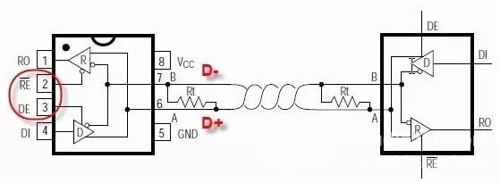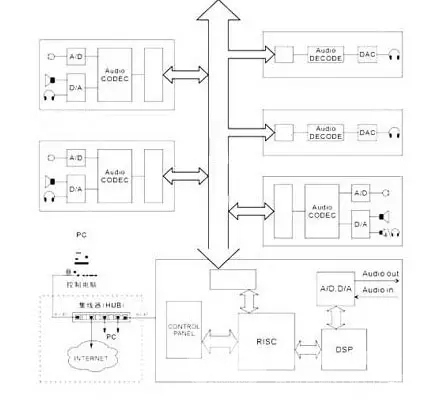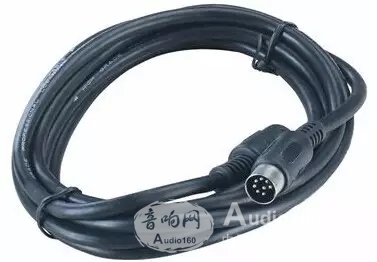Many "small white" procurement conference systems only know how to look at the brand and look at the appearance. They think that the conference system is very simple, nothing more than functional satisfaction, and the quality of the pickup is no problem.
But actually...
The surface of the conference system seems to be similar, but the core architecture is very different. At present, mainstream products can be divided into two categories from the architecture.
▼▼▼▼
One type is 485 protocol control, analog audio transmission. The functional control is completed by RS485 half-duplex data exchange, and the audio part is transmitted in analog mode (known as digital conference system in the industry).

The other type is a full-duplex network control transport architecture. The functional control and audio are all packaged in full duplex transmission in the form of 0 and 1. The conference host is a server and the speaking microphone is a terminal computer. (The industry calls it an all-digital conference system).

Specific difference
01
Noise: Digital conference systems use analog transmission, so the number of units is proportional to noise. Moreover, the audio portion is very susceptible to environmental factors. The number of units in the all-digital conference system does not have any direct relationship with the noise, and the line interference factor is greatly reduced.
02
The number of systems that can be expanded: The digital conference system is limited by the RS485 for the unit ID, and the number of system expansions is limited. There is no limit to the number of all-digitally assignable IDs, so an all-digital architecture conferencing system can have a large and scalable number.
03
Application flexibility: In a reporting application, often change the presentation or speaking position. For the digital system, the newly inserted microphone can be detected after the power is turned off and restarted. If the microphone is plugged in and turned on during the power-on state, it is easy to generate an impact sound in the speaker. The all-digital system can be inserted into the unit for use at boot time.
04
Transmission rate: This aspect is mainly reflected in the huge difference in the speed of voting results. The time for the all-digital conference system to collect the voting results of the digital conference system is more than 100 times.
05
Improved stability: The RS485 control structure of the digital conference system causes the system to be unable to be corrected in real time if the data is in a bad contact state, which will cause a single microphone and all the microphones behind the microphone link to crash or a suspended state. The host must be restarted to return to normal. When the all-digital conference system is in poor contact, a crash occurs. Simply fix or re-plug the microphone line to solve the problem.
All aspects of the digital conference system are superior to the digital conference system, but all kinds of products in the market almost fade down what kind of architecture products they are, and they are collectively called digital conference systems. For those who have more than one "all" characters, they don't care. I believe that if you read this brief, you will understand the essential difference between the two types of products.
▼▼▼▼

I tell you a very effective way to quickly identify the architecture of the conference system:
☞. If the conference system has the cable simultaneous transmission function, then we only need to look at the number of channels combined with the connection line type to judge. Digital conference system cable simultaneous transmission supports up to 6 channels, using 13-core wire, because 6 channels of simultaneous transmission occupy 6 lines, microphone audio needs 1 line, power supply 2 lines, RS485 control line 2, speaker signal line 1 strip, 1 grounding. This is the number of cores that are basically needed. Therefore, it can meet the maximum wired 6-channel simultaneous transmission, and the 13-core connecting wire must be a digital conference system. The full digital use of 6-8 core cable, can meet dozens of cable simultaneous transmission channels.

☞. If the conference system does not have the function of wired simultaneous transmission, you can only observe whether hot swap is supported. The hot plug here refers to inserting any unconnected host in use, which can be used normally without any impact noise. Conference microphone. Hot-swappable is an all-digital conference product. What is not supported is the digital conference product.
The above two methods can quickly distinguish the architecture of the conference system, which can help you better design according to product features.
Wall Box And Outlet,Wall Box Outlet,Electrical Box Outlet,Electrical Box Vs Outlet
Huizhou Fibercan Industrial Co.Ltd , https://www.fibercan-network.com